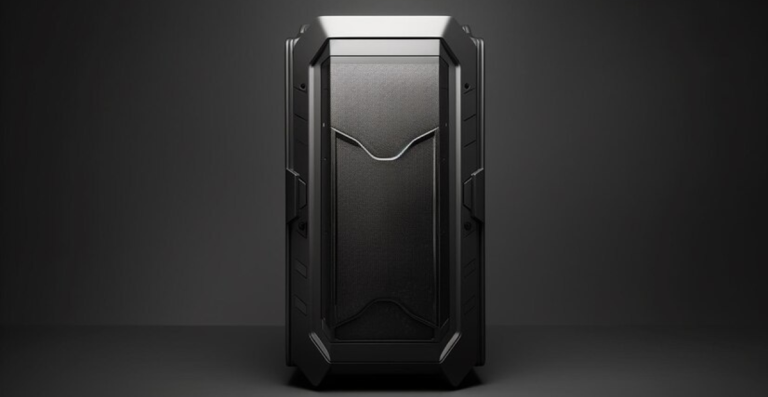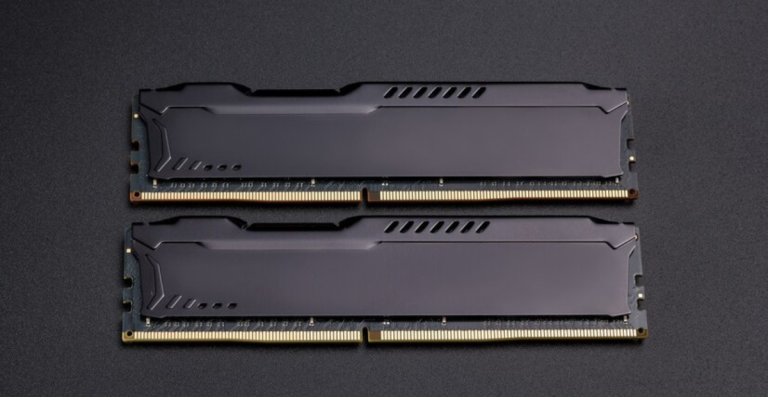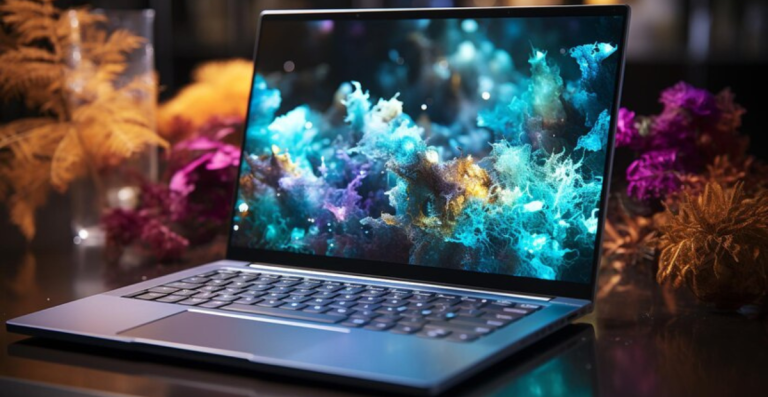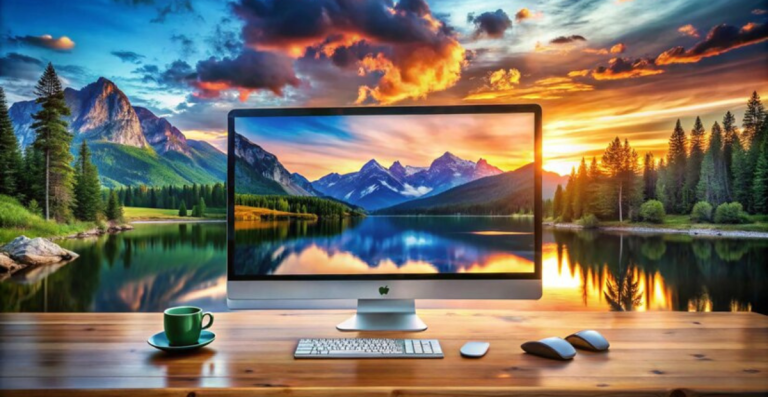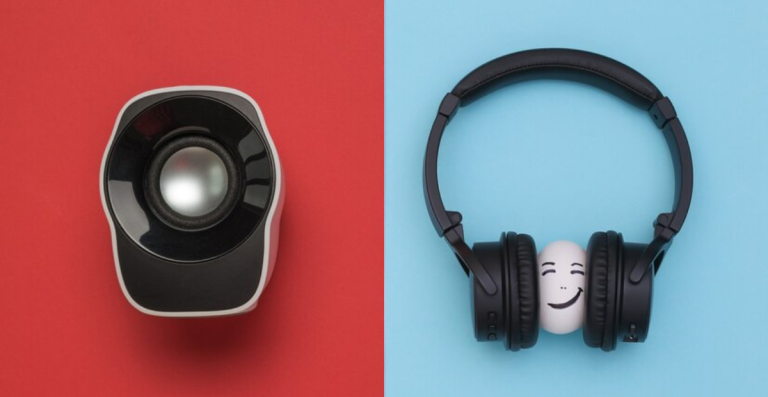How Accessories Impact Gaming and Work Performance
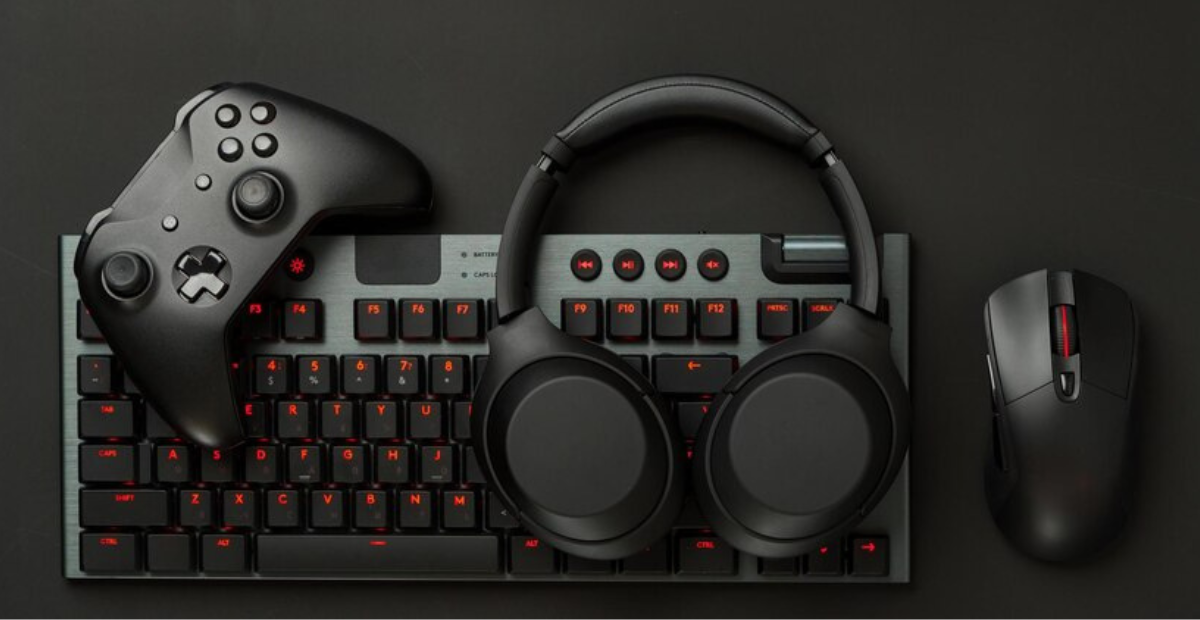
When it comes to optimizing your PC experience, the peripherals you choose can make a significant difference in both gaming and work performance. While many people focus on the core components of a computer, such as the CPU and GPU, accessories like the monitor, keyboard, mouse, headset, webcam, and microphone can elevate your setup to new heights. Selecting the right accessories is key to achieving the best performance.
In gaming, a high-quality monitor or a responsive gaming mouse can improve reaction time and immersion, giving you an edge over opponents. Similarly, in the workplace, ergonomic peripherals, such as a comfortable keyboard and a quality headset, can reduce strain and boost efficiency during long hours of use. Each peripheral influences your gaming and work performance, providing valuable insights to help you make smarter choices for your setup.
Complete Guide to PC Peripherals
PC peripherals are the external devices that connect to your computer, playing a crucial role in both gaming and work performance. Each piece of equipment, whether it’s your monitor or your mouse, has its unique features that can either enhance your experience or detract from it.
Let’s break down the key peripherals, for example, monitor, keyboard, mouse, headset, webcam, and microphone, and dive into their features, performance benefits, and how they impact your daily tasks or gaming sessions.
Monitor: Your Window to the Digital World
The monitor is often considered the most important peripheral for both gamers and professionals. Whether you’re immersed in an action-packed game or working on a complex project, the quality of your display can affect everything from your visual clarity to your overall comfort. Here’s a breakdown of key monitor features:
- Resolution and Refresh Rate: Resolution determines how sharp the image appears on your screen, while refresh rate refers to how often the image is updated per second. For gamers, a higher refresh rate (like 144Hz or 240Hz) means smoother motion during gameplay, reducing lag and motion blur. On the other hand, a higher resolution (such as 4K or 1440p) delivers crisper, more detailed visuals, perfect for both gaming and professional tasks that require precision.
- Color Accuracy and Calibration: Color accuracy is essential for graphic designers, photographers, and anyone who needs to see true-to-life colors. A monitor with great color reproduction ensures your work looks just as it should on screen. Calibration tools can help you fine-tune your display settings to meet your specific needs, ensuring that colors stay consistent over time.
- Connectivity and Additional Features: Modern monitors come with a variety of connectivity options, including HDMI, DisplayPort, and USB-C. Choosing the right one depends on your hardware and the types of tasks you’re using the monitor for. Additional features, such as built-in speakers or USB hubs, can also add convenience, reducing cable clutter and making your workspace more efficient.
- Screen Size and Aspect Ratio: Screen size and aspect ratio are important considerations based on your usage. A larger screen (27 inches or more) offers a more immersive gaming experience and provides more real estate for multitasking in professional environments. As for aspect ratio, a 16:9 ratio is typical for most uses, but ultrawide monitors (21:9 or 32:9) are gaining popularity for those seeking a broader view for gaming or productivity.
- Panel Technology (IPS, TN, VA): There are three main types of monitor panels: IPS (In-Plane Switching), TN (Twisted Nematic), and VA (Vertical Alignment). IPS panels are known for their superior color accuracy and wide viewing angles, making them a great choice for both professional use and gaming.
TN panels, while offering faster response times, tend to have poorer color reproduction and narrower viewing angles. VA panels strike a balance between contrast ratios and color accuracy, making them versatile for different use cases.
Keyboards: The Touch Interface
The keyboard is one of the most crucial peripherals when it comes to both work and gaming performance. A good keyboard can enhance productivity, improve typing speed, and give gamers the edge they need with quick and responsive keypresses. Here’s a deeper look at what makes a keyboard stand out:
- Customization and Ergonomics: A customizable keyboard allows users to program specific keys for shortcuts or special actions, making it ideal for gamers and professionals who need speed and efficiency. Ergonomically designed keyboards help reduce wrist strain, preventing discomfort during long hours of typing or gaming. Look for features like split key layouts, adjustable angles, and wrist rests to improve comfort.
- Mechanical vs Membrane Keyboards (with CTA to related post): Mechanical keyboards are known for their tactile feedback and durability, providing distinct keypresses that many gamers prefer. They come with different switch types (e.g., Cherry MX, Razer) to suit various preferences, from quiet and soft to clicky and loud.
- Layout and Keycaps: The layout of a keyboard refers to the arrangement of keys and can be tailored to different languages or gaming setups. Keycaps also play a big role in how a keyboard feels and sounds. Keycaps come in a variety of materials, such as ABS (which may wear over time) or PBT (which is more durable). Some gamers and typists prefer higher-profile keycaps for improved keystroke feel.
- Wired vs Wireless Keyboards: Wired keyboards are often preferred for gaming due to their low latency and reliability. On the other hand, wireless keyboards offer more flexibility and less clutter on your desk, but they may come with slight latency issues. If you’re a gamer, low-latency wireless options (like Bluetooth or 2.4 GHz wireless) are also available to minimize input delay.
Mouse: Precision and Control
The mouse is an essential peripheral that can significantly affect both gaming performance and work efficiency. A high-quality mouse ensures smooth, precise movements, which are crucial in competitive gaming and everyday tasks like design work or office use.
- DPI and Polling Rate: DPI (dots per inch) and polling rate are key factors in determining a mouse’s sensitivity and responsiveness. A high DPI allows for faster and more precise movements, which is beneficial for gaming, especially in fast-paced shooters. The polling rate, typically measured in Hz, determines how frequently the mouse sends data to the computer. A higher polling rate leads to more accurate and responsive tracking.
- Ergonomics and Button Layout: Ergonomic mice are designed to reduce strain on the wrist and fingers during extended use. Mice with well-placed buttons and natural contours allow for a comfortable grip, minimizing the risk of repetitive strain injuries. The button layout should also cater to the user’s needs gaming mice often come with extra programmable buttons for quick actions, while work-focused mice may have additional buttons for navigation or multitasking.
- Gaming Mice Deep Dive (with CTA to related post): Gaming mice are tailored to the needs of gamers, offering features like customizable DPI settings, ergonomic designs, and programmable buttons. They are built for durability and precision, with optical sensors offering smoother tracking. If you’re serious about gaming, choosing a specialized gaming mouse can make all the difference. For more on the best gaming mice, check out our detailed guide on “Top Gaming Mice for Pro Gamers.”
- Sensor Technology (Optical vs Laser): Optical and laser sensors are the two most common types found in modern mice. Optical sensors use infrared light to track movement and are known for their accuracy on most surfaces. Laser sensors, on the other hand, provide even greater precision and work on more surfaces, including glossy or reflective ones. Both sensors have their pros and cons, but the choice often depends on the surface type and personal preference.
- Weight and Grip Styles: The weight of the mouse can affect how it feels during use. Heavier mice offer more stability and control, which is preferable for some gamers, while lighter mice allow for faster, more fluid movements. The type of grip, palm, claw, or fingertip, also affects how the mouse feels in your hand, influencing comfort and performance. Choose a mouse that matches your grip style for optimal comfort and control.
Headset: Immersion and Communication
A high-quality headset is an essential peripheral for both gaming and work environments, offering clear audio and effective communication. Whether you’re listening to in-game soundtracks, video calls, or working on intricate audio tasks, the right headset can enhance your overall experience and productivity.
- Immersive Sound and Communication: A good headset provides immersive sound, enabling gamers to hear every detail in the game world, from distant footsteps to subtle environmental sounds. For work, clear audio quality ensures that you can hear every word in virtual meetings or during content creation. A built-in microphone allows for clear communication, which is essential in both professional and gaming contexts.
- Audio Quality and Features: Headsets with high-quality audio drivers produce rich, full-range sound, essential for enjoying games, movies, or music with clarity. Look for features like noise-canceling microphones, which reduce background noise and enhance voice clarity, and adjustable volume control for easy access during use.
- Headsets vs Speaker Systems (with CTA to related post): While headsets offer the advantage of personal, immersive audio and noise isolation, speaker systems provide a more shared audio experience. Depending on your needs, both options have their merits. Headsets are ideal for solo sessions or when you need to maintain privacy. If you’re interested in exploring speaker systems further, check out our post on “Best Speaker Systems for Home Use.”
- Comfort and Build Quality: Comfort is a key consideration, especially if you plan to wear your headset for long sessions. Look for padded ear cups and adjustable headbands to reduce pressure and enhance comfort. The build quality should be durable, especially if you’re using the headset for gaming or professional work frequently. Lightweight designs can reduce strain over time, while sturdier builds may last longer.
- Microphone Quality and Noise Cancellation: The microphone’s quality is just as important as the audio in your headset. A good quality mic ensures clear voice transmission without distortion. Noise cancellation technology in the microphone helps eliminate background noise, ensuring that your voice comes through clearly in both gaming and professional conversations. This feature is particularly important in noisy environments or for maintaining professional communication during virtual meetings.
Webcam: The Visual Connection
Webcams have become indispensable for both gaming and work, especially with the rise of live streaming, virtual meetings, and video content creation. A good webcam can enhance your online presence, making communication more personal and professional.
- Streaming and Professional Use: For gamers, a high-quality webcam is crucial for streaming. It allows your audience to connect with you visually, making the experience more interactive. For professionals, webcams are essential for virtual meetings, allowing you to present yourself in high definition during video calls and conferences. A good webcam ensures that you look clear and professional, contributing to better engagement with your audience or colleagues.
- Low-Light and Auto-Focus Capabilities: In any setting, lighting can vary, but webcams with low-light correction capabilities can help ensure you are always visible, even in dim environments. Auto-focus features allow the camera to maintain sharpness, ensuring that you stay in focus during dynamic movements, especially in gaming or presentation situations. This is especially important for content creators who need clear and smooth video quality for their streams.
- Field of View and Resolution: Webcams come in different field-of-view options, typically ranging from 60 to 120 degrees. A wider field of view is useful for showing more of your surroundings, ideal for streams or presentations where background context is important.
Resolution is another key feature, with HD (1080p) being the standard for most modern webcams. For professional use, 4K webcams are available, offering crisp, detailed video, perfect for high-quality virtual conferences or content creation.
Microphone: Clear Communication
A good microphone is crucial for both work and gaming, ensuring clear communication whether you’re collaborating on a project or talking to your teammates during a game.
- Built-in vs Standalone Microphones: Most PCs and headsets come with built-in microphones, but if you want superior sound quality, especially for streaming or professional work, investing in a standalone microphone is a smart choice. Standalone mics, such as condenser or dynamic microphones, capture a broader range of frequencies and offer clearer, richer sound. Built-in mics can be convenient but often lack the depth and clarity of external models.
- Audio Quality for Communication: Clear audio is key for effective communication, whether you’re on a work call, video conferencing, or playing multiplayer games. A good microphone ensures that your voice is heard crisply without distortion. Consider models that minimize background noise and handle a wide range of vocal tones, ensuring that your speech is always clear and intelligible to others.
- Polar Patterns and Frequency Response: Microphones come with different polar patterns, including cardioid, omnidirectional, and bidirectional. A cardioid microphone, for instance, focuses on capturing sound from the front, making it perfect for gaming and professional calls, where you want to minimize background noise.
The frequency response of a microphone determines the range of sounds it can capture. For most communication, a frequency response of 20 Hz to 20 kHz is adequate, but specialized microphones may offer broader ranges for high-end audio production.
How Peripherals Impact Gaming Performance
Peripherals are essential in enhancing gaming performance by improving precision, reaction time, and overall immersion. The right setup can significantly influence your gameplay, giving you an edge in both casual and competitive gaming.
Enhancing Reaction Time and Precision
A high-DPI mouse, a fast keyboard, and a low-latency monitor allow for quicker, more accurate movements in gaming. These features reduce input lag and enhance precision, critical for fast-paced gameplay, where every millisecond can make a difference.
Creating Immersion and Competitive Advantage
A high-refresh-rate monitor, quality headset, and responsive peripherals immerse gamers deeper into the experience. Clearer audio and smooth visuals can give you an advantage by helping you react faster to in-game events, improving performance in multiplayer games.
How Peripherals Impact Work Performance
The right peripherals can significantly boost productivity and comfort, which are essential for long work hours. Properly chosen accessories help in reducing strain, improving efficiency, and enhancing communication, making them crucial for both office tasks and remote work setups.
Improving Efficiency and Reducing Strain
Ergonomically designed keyboards, mice, and chairs help reduce physical strain during long working hours. Additionally, the right monitor setup improves focus, allowing for better task management and enhanced productivity, ultimately benefiting overall performance at work.
Facilitating Collaboration and Communication
Webcams, microphones, and headsets are indispensable for effective virtual meetings and collaboration. High-quality devices allow for clear communication, creating smoother interactions with colleagues and clients, improving teamwork and decision-making, and reducing miscommunications in remote work environments.
How to Choose the Right Peripherals for Your PC
Selecting the right peripherals requires balancing your personal needs, budget, and future-proofing considerations. Making informed decisions ensures that you invest in devices that will enhance your experience, whether for gaming or work.
Primary Use Case
Consider what you’ll primarily use your peripherals for, whether it’s gaming, content creation, or work. Different tasks may require specific features, such as high DPI for gaming mice or large, color-accurate displays for design work.
Budget
Your budget plays a vital role in your peripheral choices. Higher-end peripherals typically offer more advanced features and longer-lasting durability. However, there are plenty of budget-friendly options that provide excellent value without compromising too much on quality.
Ergonomics and Comfort
Ergonomic peripherals, including keyboards and mice, can prevent discomfort or injury from prolonged use. Features like adjustable heights, wrist rests, and comfortable grips can make a significant difference in reducing strain during extended work or gaming sessions.
Compatibility
Ensure that your peripherals are compatible with your existing system. Check for necessary ports or wireless capabilities and consider future compatibility with other devices, especially if you’re planning to upgrade your PC in the near future.
Future Upgrades
Consider future upgrades when selecting peripherals. Opt for devices that offer flexibility or support for the latest tech advancements, such as USB-C ports or the ability to handle higher resolutions and refresh rates.
Wired vs Wireless Considerations
Wired peripherals offer a stable connection with minimal latency, ideal for gaming. Wireless devices provide more freedom of movement but might come with occasional latency or battery concerns. Choose based on your needs, whether you prioritize convenience or performance.
The Role of PC Components in Peripheral Performance
The performance of your peripherals is significantly influenced by the power of your PC’s components. Understanding how the CPU, GPU, and connectivity standards interact with your peripherals can help optimize your overall setup.
CPU and GPU Influence on Display Performance
Your PC’s CPU and GPU play a key role in ensuring smooth performance on your monitor, especially for gaming or high-resolution tasks. A powerful GPU can support higher frame rates and resolutions, ensuring that your monitor’s capabilities are fully utilized.
Connectivity Standards (USB, Bluetooth) and Latency
The connectivity options of your peripherals, such as USB or Bluetooth, can impact performance. USB 3.0 or newer ports offer faster data transfer speeds, reducing latency. Bluetooth is convenient but may introduce some lag compared to wired connections, especially for gaming.
Emerging Peripheral Technologies
The world of PC peripherals is evolving, with new technologies enhancing both gaming and work experiences. These innovations aim to improve immersion, precision, and overall usability, pushing the boundaries of what is possible in personal computing.
Virtual and Augmented Reality:
- VR headsets offer immersive gaming experiences.
- AR devices enhance interaction with the physical world, useful for both gaming and work.
Adaptive Controllers:
- Customizable layouts and sensitivity.
- Designed for accessibility, making gaming more inclusive.
Controller vs Keyboard & Mouse:
- Controllers are comfortable and easy for casual gaming.
- Keyboards and mice provide precision and flexibility, ideal for competitive gaming.
Haptic Feedback and Advanced Input Methods:
- Haptic feedback adds tactile sensations, increasing immersion.
- Advanced input methods like gesture recognition and eye-tracking enhance interaction.
Peripheral Maintenance and Upgrades
- Cleaning and Care Tips:
- Regularly clean your peripherals to prevent dust and debris buildup.
- Use microfiber cloths for screens and soft brushes for keyboards and mice.
- Keep cables tidy and free from wear.
- When to Upgrade Your Peripherals:
- Upgrade when performance issues arise (e.g., unresponsive buttons, poor display quality).
- Consider upgrading for new features, such as higher resolutions or more customizable controls.
Conclusion
Choosing the right PC peripherals is crucial for optimizing both gaming and work performance. Whether you’re aiming for faster reaction times, better immersion, or increased comfort, investing in quality peripherals can make a significant difference.
By considering your specific needs, ergonomics, and future upgrades, you can create a setup that enhances your experience and helps you perform at your best.

